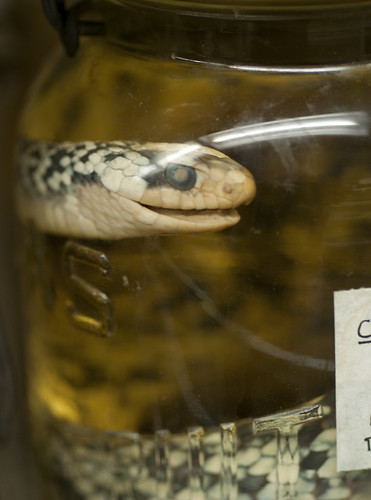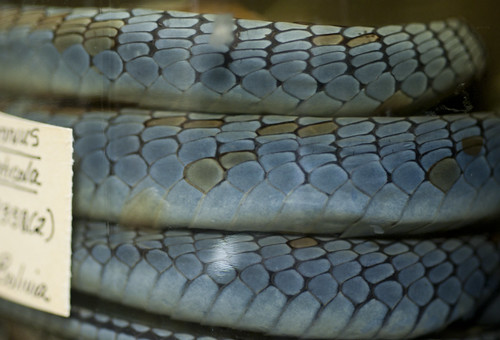It was fascinating — and a little sad — to see jars and jars of box turtle hatchlings, or, in a few cases, a single sea turtle head, occupying its own container. Some jars were packed with caecilians; others with newts. What really caught my eye, however, were the snakes.
While liquid preservation does a great job at keeping an animal's body intact, it does not often save the pigmentation of scales, skin, or fur. As a result, older specimens take on a pale, colorless appearance. That wasn't the case, however, for a few blue-hued snakes, whose coils provided an unexpected splash of color amongst shelves of ghostly specimens:
Perhaps what I like the most about the snake specimens is that their natural shape lends itself well to being in a jar. While mammals and turtles look awfully awkward crammed into a container, the snake specimens seemed to fit just right, their coils winding gracefully within the glass.
Refracted light, created by the curved glass and the liquid inside, also caused the specimens to take on a completely different appearance:
It's always such a treat to see what goes on behind the scenes at the museum! These photos cannot come close to representing the scope of how large the fluid specimen collection is — it is vast, and more than a little overwhelming.








I am glad that I could give you a tour!
ReplyDeleteThe museum and its collections always intrigue me. I love the glass and snake shape interactions in your photos.
ReplyDelete